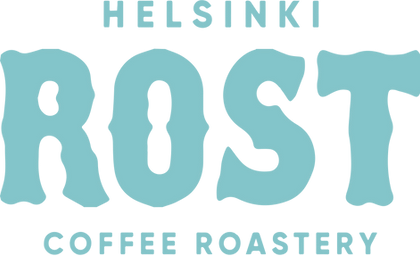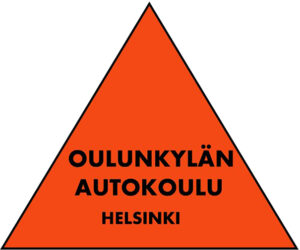Åggelby Fotbollsklubb, the first sports club in Oulunkylä, was established in 1907. This means that football has been played in Oulunkylä ever since the early days of organised football in Finland. The Football Association of Finland and HJK Helsinki were established in the same year.
Idrottsföreningen Gnistan was established by half a dozen students of Svenska Reallyceum and Åggelby Svenska Samskola in Oulunkylä in 1924. IF Gnistan was initially focused on cross-country skiing, athletics, swimming and Finnish baseball, although it is likely that football was also played since the early days. Finnish baseball being among IF Gnistan's sports was somewhat unusual, as the sport had never gained much of a foothold among Swedish-speaking Finns, nor was it a popular activity in physical education classes in Swedish-speaking schools. This is probably due to the fact that Gnistan's membership has always been highly bilingual in spite of being established by Swedish speakers.
Football became a well-established sport for Gnistan in the 1930s when IF Sportaren, a small club founded in Oulunkylä and mockingly dubbed "the Kuckubacka team", joined Gnistan. A football section was established in Gnistan at the insistence of the Kuckubackans, and Gnistan soon developed into a formidable opponent for small clubs in the Helsinki region. When Oulunkylä’s magnificent sports field was completed in 1934, it provided an excellent venue for playing football. The following year, Gnistan joined the Helsinki district of the Football Association of Finland.
While no significant success was accomplished in the club's first year in the district league, the second year brought a sweet victory in the Autumn Cup with a 1-0 win against HJK. Visiting teams were eager to play at the Oulunkylä field, which meant that Gnistan hosted a number of friendly matches with clubs such as HPS, which had several national team players in its line-up. Gnistan was also active in athletics in the late 1930s, going up against clubs such as Malmin Ponnistajat, Tapanilan Erä and the new local rival Oulunkylän Urheilijat (OKU). The club had rented a coffee pavilion from the city in Pikkukoski, which provided a fine setting for meetings as well as popular dance events on summer Saturday evenings.
All of this vibrant activity was then brought to a halt when the war began and young men were called up for service. The arduous task of reviving the club's operations began in 1945. A planned merger with Oulunkylän Urheilijat was ultimately rejected, and Gnistan's activities started to get going in earnest.
The club's junior football operations started in 1945 with B and C junior teams participating in district leagues. The first team won its first district championship in 1947 in the district's third tier. The team was promoted to the regional league in 1958 and would stay at that level or higher from then on.
When Gnistan celebrated its 25th anniversary in 1949, it had approximately 300 members, an active athletics section that organised eight inter-club athletics meets, and a first team in men's football that held on to its place in the regional league. More history was made when Gnistan established its first international contacts by having the football team visit Skælskør in Denmark.
One of the sweetest victories in Gnistan's early football history was achieved in 1957, in a Finnish Cup match that was also a betting fixture. Gnistan beat Gamlakarleby Bollklubb, a club from the second-highest tier of Finnish football, by an impressive score of 5-3. In winter, bandy and handball were the main sports in place of football. Gnistan won a district championship in bandy in the fourth tier, and the handball team competed in the second tier for a while. Junior sports were expanded to include the D-junior level, but no significant success was achieved due to a lack of coaches. Gnistan's football activities were still largely focused on the first team.
The club remained active in athletics throughout the 1950s, and cross-country skiing maintained a stable position among Gnistan's sports. Other sports included orienteering, women’s gymnastics, table tennis and cross-country running. At the turn of the decade, as the club approached its 40th anniversary, the old leadership began to step down. “Bobo” Krabbe, who had been chairman since Gnistan was first established, vacated his position and was succeeded by Ernst Fogden, whose primary interest was athletics. However, he would only serve as chairman for one year. As society changed, it became clear that a small club could no longer spread its limited resources between many different sports. As cross-country skiing and athletics were phased out, Gnistan became exclusively a football club and Jacob Söderman was elected as its chairman.
In the 1960s, the first team performed well and won a district championship in tier 1B. Promotion to the second-highest tier of Finnish football was occasionally close, but the team did not quite get there. Around the mid-1960s, Gnistan became much more active in junior football. In 1966, Gnistan’s B-junior team took a trip to Norrtälje in Sweden, which helped to accelerate the development of junior football. Nevertheless, the process of refocusing on football was not without its complications. With club chairman Jacob Söderman starting to take on more demanding challenges in his career outside Gnistan, the club's very existence was at risk for a time. Stig Kämpe emerged as the club's saviour by taking on the role of chairman during a difficult transition period in 1968–1969. The following year, Nils Andersson took over as chairman, providing much-needed continuity. Gnistan’s evolution into one of the strongest developers of junior footballers in the Helsinki district could now begin.
Sources: Gnistan anniversary publication 2004, IF Gnistan ry; Oulunkylä – Åggelby Vihreä idylli, Maunu Harmo, Oulunkylä-seura ry, 1987. Gnistan anniversary publication 2004, IF Gnistan ry; Oulunkylä – Åggelby Vihreä idylli, Maunu Harmo, Oulunkylä-seura ry, 1987.
















































